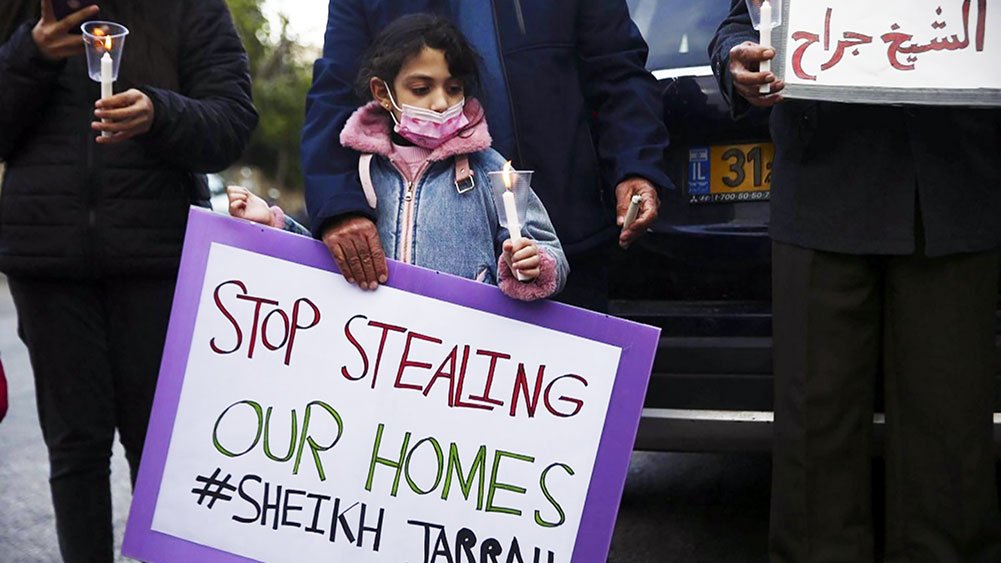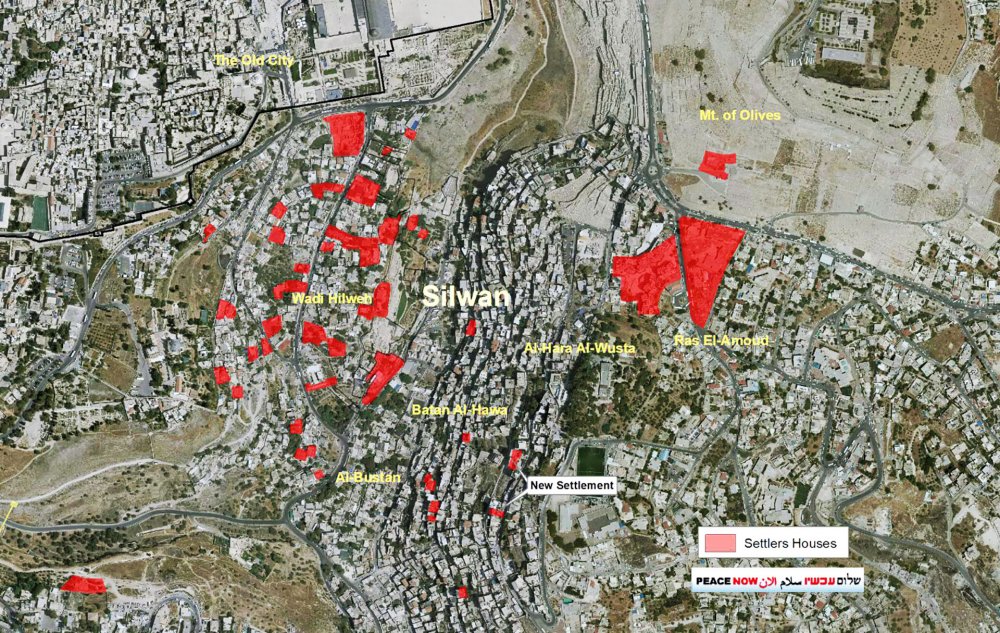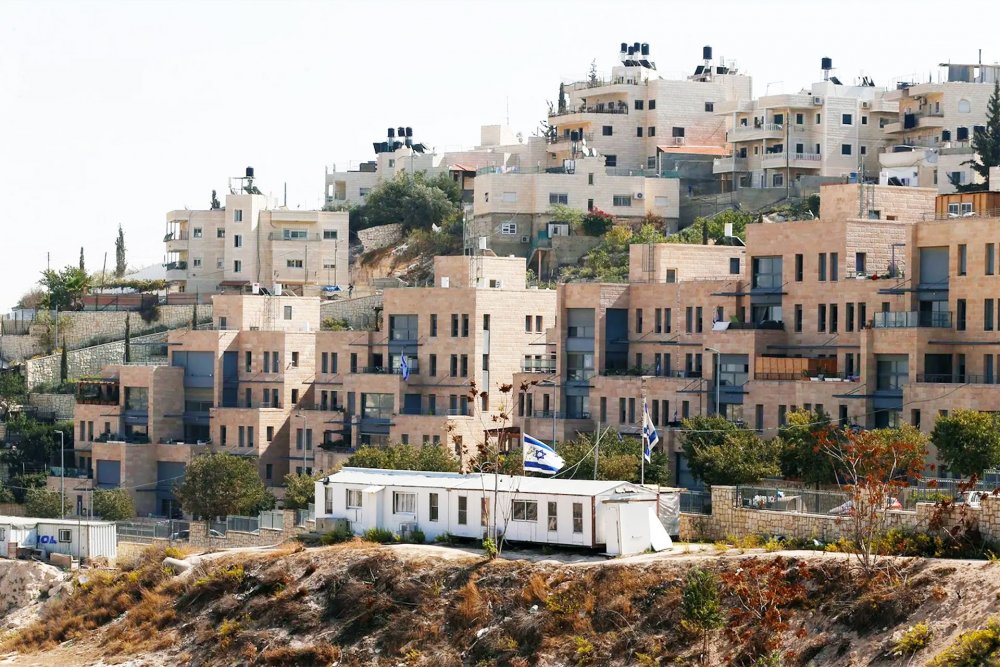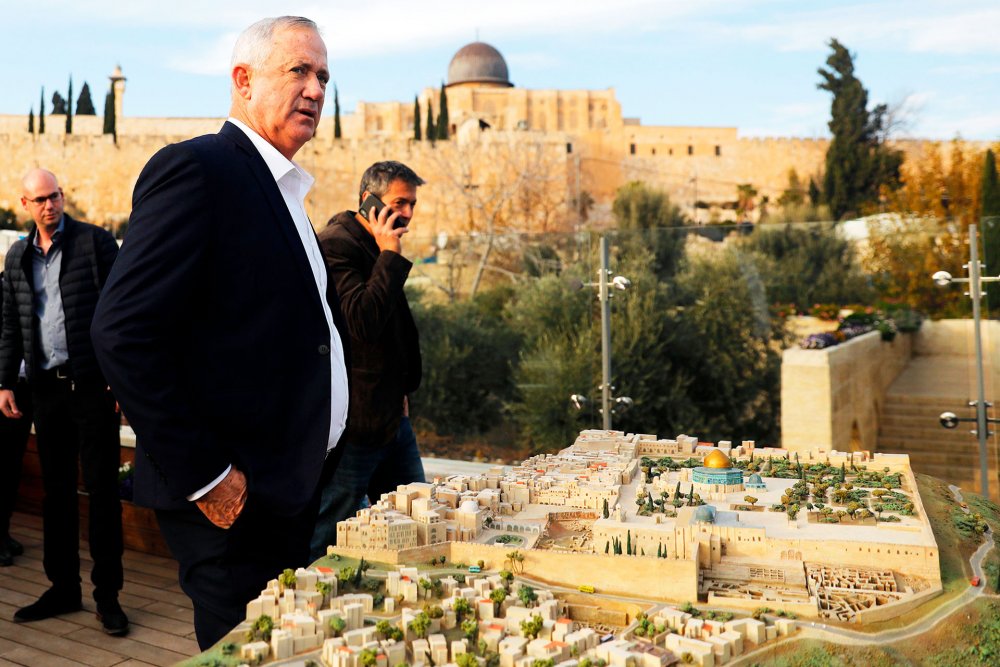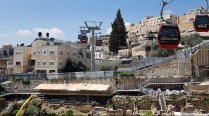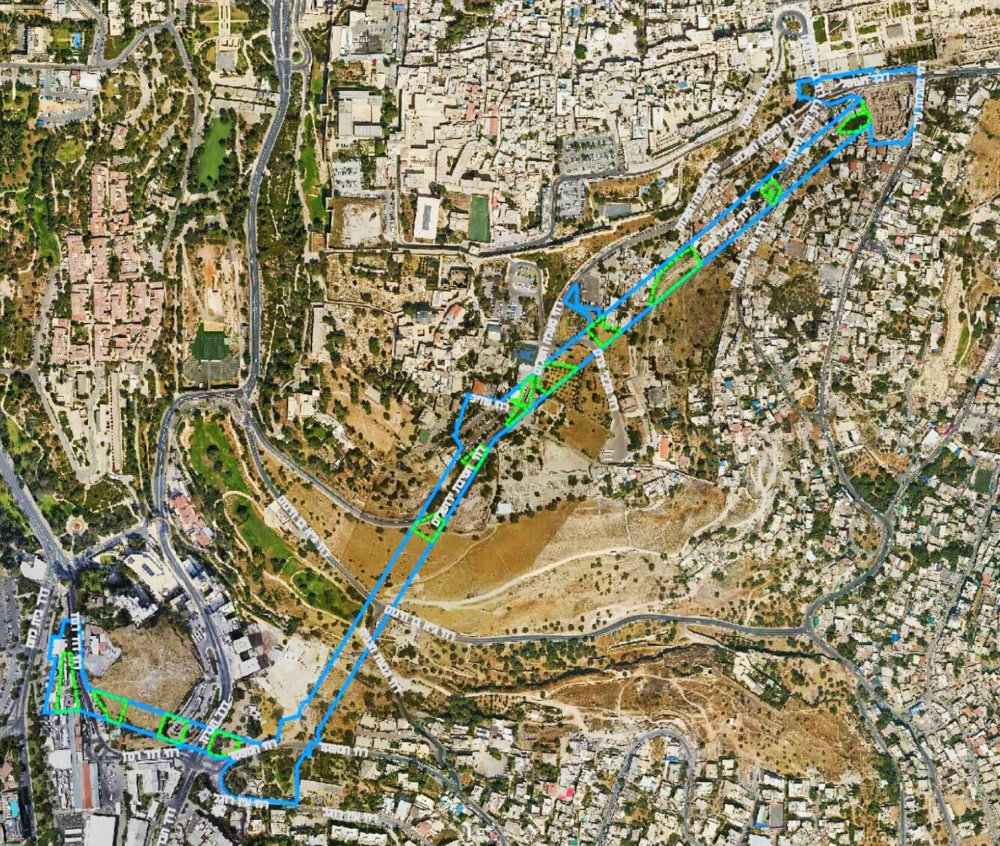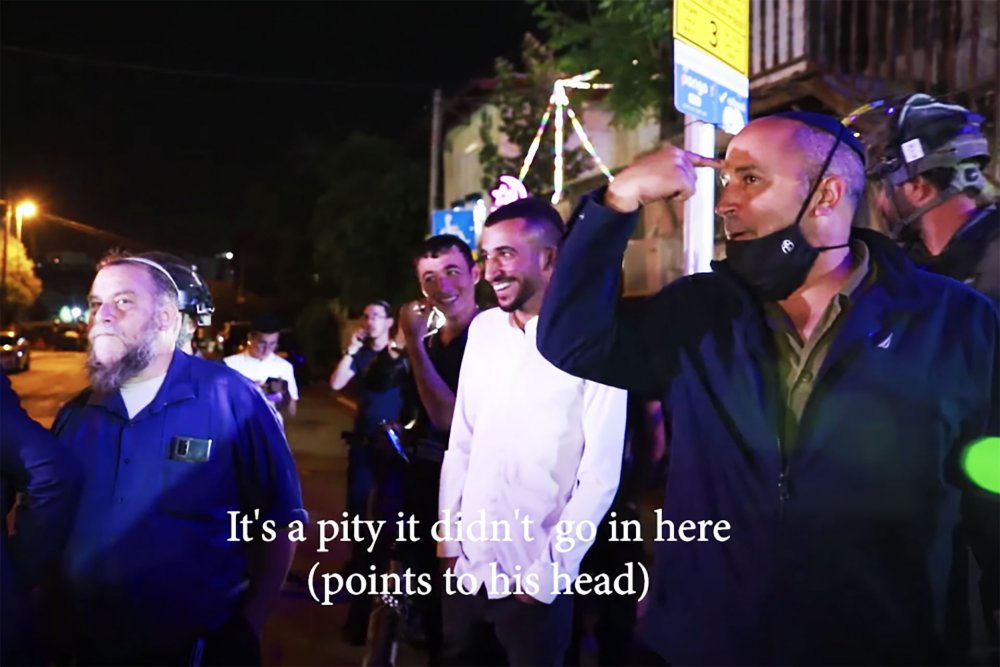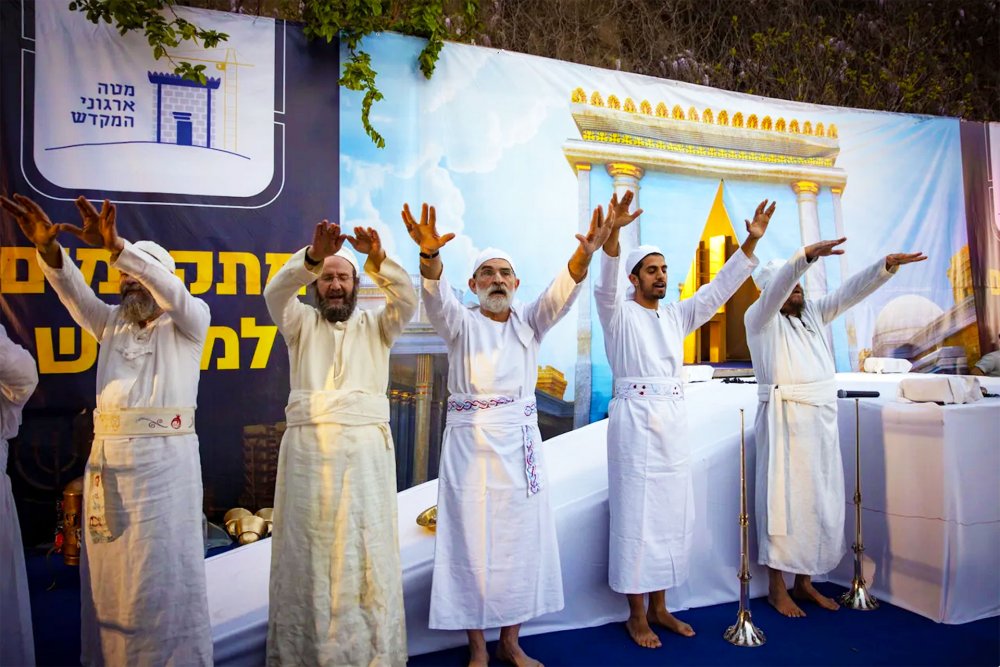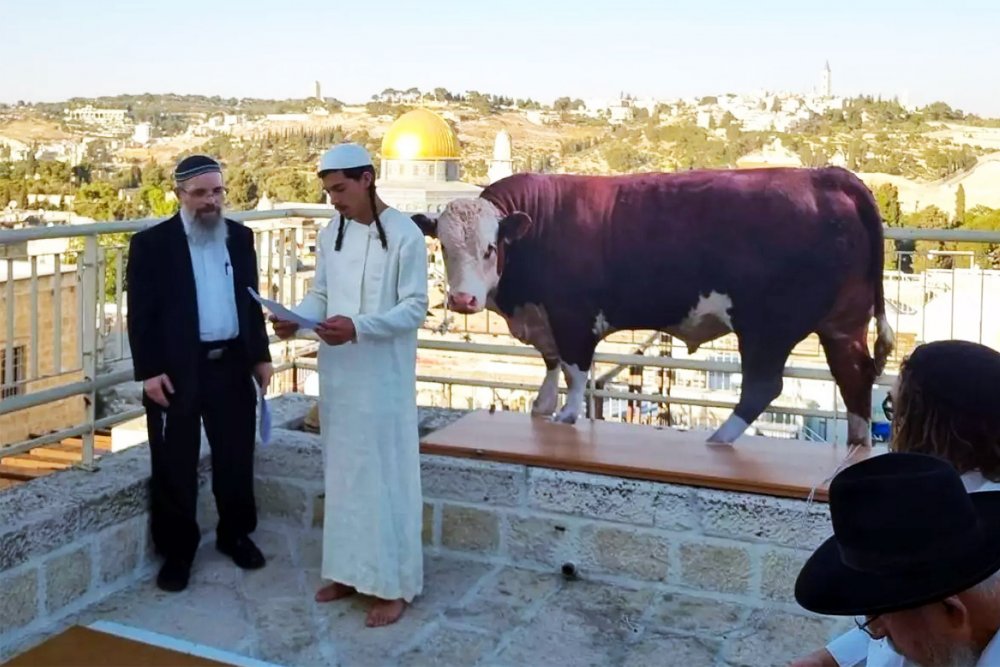Ateret Cohanim was able to seize three historic hotel properties in the Old City by purchasing 399-year leases from the Greek Orthodox Church: Hotel Imperial and the nearby Petra Hotel, located at the entrance to the Jaffa Gate, were leased for $1.25 million and $500,000, respectively. The Muzamiya House, also located in the Old City, was leased for $55,000. Later efforts by the church to contest and void these deals were not successful in Israeli courts.7
Although most of its operations are located in the Old City, Ateret Cohanim, alongside the General Custodian, is promoting the Kidmat Tzion settlement plan (see With Eyes on Gaza, City Fast Tracks New Settlement That Will Foreclose Future Palestinian Capital in Abu Dis).
In the Palestinian neighborhood of Ras al-Amud, located inside Jerusalem’s municipal boundary and the Separation Wall, Ateret Cohanim also established a settlement in the Palestinian town of Abu Dis.
Much of the organization’s activities outside the Old City are located in Silwan, specifically in the Batn al-Hawa neighborhood, where it has seized at least six buildings since 2004—expelling 14 Palestinian families (see One Lot at a Time, Israeli Settlers Expand Their Presence in Palestinian Silwan). Currently, more than 700 Palestinians are at risk of being dispossessed and displaced because of Ateret Cohanim (see Israeli Courts Order More than 50 Palestinians Expelled from Homes in Silwan and Sheikh Jarrah).
“The General Custodian knows where there are alleged Jewish properties throughout East Jerusalem, and they’re abusing their authority to initiate settlement plans,” Cohen said.
The Givat HaShaked Jewish settlement, which is planned with nearly 700 housing units in the Palestinian neighborhood of Beit Safafa, in southern Jerusalem, was the first such plan to be initiated by the General Custodian in 2021.8 The Jerusalem District Planning Committee subsequently approved the Givat HaShaked settlement in 2024 (see Under Cover of War, Israel Charges Ahead with Severing East Jerusalem from the West Bank through Settlements).
“Essentially, they are now starting to develop large settlement projects on lands that they administer, which is completely new,” Cohen said.
The General Custodian is also working with settler-affiliated companies Topodia and Nofey Rachel Ltd. to advance Israeli settlements in East Jerusalem. In south Jerusalem, Topodia and the General Custodian are seeking to build 450 settler housing units on open land between the Palestinian neighborhoods of Umm Lison and Jabal Mukabbir,9 and with Nofey Rachel Ltd., the General Custodian wants to build 650 housing units in the Palestinian neighborhood of Sur Bahir (see Under Cover of War, Israel Charges Ahead with Severing East Jerusalem from the West Bank through Settlements).
Along with promoting settlement plans, the General Custodian is also using settlement of land title (SOLT) procedures to register property to the state or settler groups (see Land Settlement and Registration in East Jerusalem). For instance, in 2022, the General Custodian registered land near the designated Kidmat Tzion settlement to the state, suggesting another settlement may be advanced next to where Kidmat Tzion is planned (see With Eyes on Gaza, City Fast Tracks New Settlement That Will Foreclose Future Palestinian Capital in Abu Dis). The General Custodian is also carrying out land registration procedures in the Palestinian neighborhood of Umm Lison, directly east of Sur Bahir.
In 2001, Ateret Cohanim gained control of the Benvenisti Trust, which was established in 1899 and housed Jewish immigrants from Yemen in Silwan who subsequently abandoned the area during the 1936–39 Great Palestinian Revolt. Through the trust, Ateret Cohanim displaces Palestinians from Silwan and replaces them with settlers by claiming the homes belong to Yemeni Jews whose properties fell under the trust as per Israel’s 1970 Legal and Administrative Matters Law (see Jerusalem Court Sides with Settlers, Ruling to Displace 66 Palestinians from Batn al-Hawa, Silwan).
“Essentially, the Registrar of Trusts [which sits under Israel’s Ministry of Finance] did not conduct due diligence at the time, because they were part of appointing Ateret Cohanim members to the trusteeship,” Cohen said. “You have this organization that’s very politically and ideologically driven, and then you have the Registrar of Trusts, which is a state body.”

